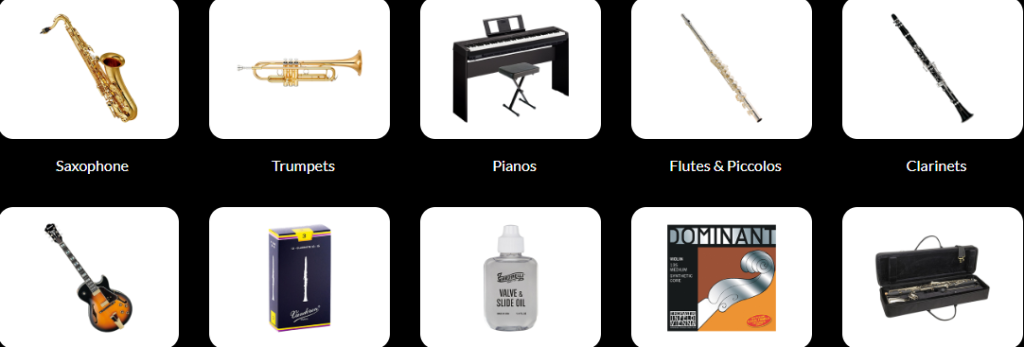From Classical to Contemporary: Tracing the Journey of Music and Arts – A Comprehensive Review

Welcome, music and art enthusiasts! Get ready to embark on a fascinating journey through time as we explore the evolution of music and arts. From the refined elegance of classical compositions to the bold expressions of contemporary forms, this comprehensive review will take you deep into the heart of creativity.
Music and arts have always been an integral part of human culture, reflecting our emotions, experiences, and aspirations. Over centuries, these artistic mediums have evolved in profound ways, capturing the essence of different eras and leaving an indelible mark on society.
So fasten your seatbelts as we dive headfirst into this captivating exploration! Let’s begin by delving into the enchanting world of classical music and its influential composers who paved the way for future generations.
The Classical Era: Characteristics and Influential Composers
In the world of music, the Classical era is often regarded as a period of elegance, balance, and restraint. Spanning from roughly 1750 to 1820, this era brought forth a multitude of talented composers who left an indelible mark on the history of music.
One defining characteristic of classical music is its emphasis on formal structure. Compositions during this time were meticulously crafted with clear-cut forms such as sonatas, symphonies, and concertos. These strict frameworks allowed for intricate musical development and thematic variations.
Prominent composers like Wolfgang Amadeus Mozart and Ludwig van Beethoven emerged during the Classical era. Mozart’s genius was recognized at an early age, composing masterpieces that showcased his melodic brilliance and impeccable craftsmanship. Beethoven pushed boundaries by infusing his works with emotional depth and intensity.
Another notable figure in this era was Joseph Haydn, often referred to as the “Father of Symphony.” His compositions exemplified precision and innovation while maintaining a sense of humor in their playful melodies.
Classical music also saw advancements in instrumentation during this time. The piano became increasingly popular as it offered musicians greater expressive capabilities compared to its predecessors.
The Classical era laid the foundation for Western classical music as we know it today. Its timeless compositions continue to captivate audiences worldwide with their gracefulness and artistry.
The Romantic Era: Impact on Music and Arts
The Romantic Era, spanning roughly from the late 18th to the early 19th century, was a period of intense emotion and individual expression in both music and arts. It was characterized by a departure from the strict rules of the Classical Era and a focus on personal feelings and experiences.
In music, composers like Ludwig van Beethoven, Franz Schubert, Frederic Chopin, and Richard Wagner pushed boundaries with their emotionally charged compositions. They sought to convey powerful emotions through their music, often exploring themes of love, longing, nature, and spirituality.

Modernism and Its Influence in Music and Arts
Modernism in music and arts was a transformative movement that emerged in the late 19th and early 20th centuries. It challenged traditional artistic norms and pushed boundaries, resulting in groundbreaking works of art across various mediums.
In music, modernist composers sought to move away from the predictable structures of classical music. They experimented with dissonance, unconventional harmonies, and complex rhythms. Composers like Igor Stravinsky and Arnold Schoenberg revolutionized the way we perceive sound, giving birth to new genres such as atonal music.
Similarly, modernism had a significant impact on visual arts. Artists like Pablo Picasso and Wassily Kandinsky embraced abstraction and rejected literal representation. They explored innovative techniques such as cubism and expressionism, creating visually striking works that defied convention.
The influence of modernism extended beyond just music and visual arts – it permeated literature, theater, architecture, and even philosophy. This movement signaled a departure from traditional aesthetics towards individual expression and subjective interpretation.
By challenging established norms and conventions, modernists paved the way for future artistic exploration. Their daring experimentation continues to inspire contemporary artists today who strive to push boundaries even further.
As we reflect on the influence of modernism in musicandarts , we can appreciate how this movement transformed creative expression forever. The legacy left by these visionary artists is an invitation for future generations to continue pushing boundaries through innovative forms of artistic expression
Contemporary Music and Art Forms: Trends and Innovations
Contemporary Music and Art Forms: Trends and Innovations
In the ever-evolving world of music and arts, contemporary forms have taken center stage, pushing boundaries and challenging traditional norms. The era of contemporary music and art is characterized by its avant-garde nature, embracing innovation, experimentation, and diversity.
One trend that has emerged in contemporary music is the fusion of different genres. Artists are no longer confined to one specific style but are exploring a multitude of influences to create unique sounds. This blending of genres not only creates fresh musical experiences but also appeals to a wider audience who appreciate eclectic compositions.
Another notable trend in contemporary art is the integration of technology. With advancements in digital tools and software, artists can now experiment with new mediums such as digital painting, multimedia installations, virtual reality experiences, and interactive artworks. These technological innovations have opened up endless possibilities for artistic expression.
Moreover, collaboration has become increasingly prevalent in both music and art scenes. Artists from different disciplines come together to create interdisciplinary works that combine various forms like dance performances accompanied by live music or visual arts complemented by immersive soundscapes. These collaborations not only foster creativity but also encourage cross-pollination between different artistic realms.
Additionally, social activism has become an integral part of contemporary music and art. Many artists use their platforms to address pressing social issues such as climate change, racial inequality, gender identity rights, or mental health awareness through their creations. By incorporating these important messages into their work’s narrative or visual representations; they strive to spark conversations about societal concerns while providing thought-provoking experiences for audiences.
Furthermore; there has been a rise in experimental approaches within contemporary arts wherein artists challenge conventional techniques; materials or aesthetics resulting in unconventional outcomes that defy categorization. These experimental endeavors push the boundaries; encouraging viewers/listeners/audience members alike; to question preconceived notions about what constitutes “art” or “music”.
As we navigate the intricate landscape of contemporary music and arts, it is evident that the trends and innovations shaping

The Role of Technology in Shaping the Future of Music and Arts
As we look into the future of music and arts, one cannot ignore the significant role that technology plays in shaping these creative fields. Technology has revolutionized how we create, consume, and experience music and art forms.
With advancements in digital recording and production tools, artists now have a vast array of resources at their fingertips to explore new sounds and push boundaries. The accessibility of software instruments allows for infinite possibilities in composing and arranging music.
Moreover, technology has opened up new avenues for collaboration among artists from different parts of the world. Through virtual platforms and online communities, musicians can connect, share ideas, and create together without being limited by geographical constraints.
In addition to creation processes, technology has also transformed how we consume music and visual arts. Streaming services like Spotify or Apple Music provide instant access to an extensive catalog of songs across genres. Art enthusiasts can discover new artists through online galleries or immersive VR experiences.
Furthermore, emerging technologies such as virtual reality (VR) are pushing the boundaries of artistic expression even further. Artists can now create immersive installations that transport viewers into alternate realities combining visuals with soundscapes.
The integration of technology is not only shaping the present but also holds tremendous potential for the future of music and arts. Advancements in artificial intelligence (AI) could lead to innovative ways of creating personalized musical compositions or generating unique visual artworks based on individual preferences.
However, it is crucial to strike a balance between embracing technological advancements while preserving human creativity at its core. The authenticity behind every brushstroke or melody should never be overshadowed by automated processes.
In conclusion,
technology continues to play a pivotal role in transforming the landscape of musicandarts.
Conclusion: What Lies Ahead for Music and Art Lovers?

As we reflect on the journey of music and arts from classical to contemporary, one thing is certain – the future holds endless possibilities for music and art lovers. The evolution of these forms of expression has been marked by innovation, creativity, and an ever-changing landscape.
With technology continuing to advance at a rapid pace, we can expect new avenues for artistic exploration and collaboration. Virtual reality experiences may transport us into immersive concerts or exhibitions. Artificial intelligence might push the boundaries of composition and visual design.
Moreover, with globalization connecting cultures like never before, diverse influences will continue to shape our understanding of music and art. Fusion genres will emerge as artists draw inspiration from different traditions around the world.
In addition to technological advancements and cultural exchange, social issues are also likely to play a significant role in shaping the future of music and arts. Artists have always been at the forefront of societal change, using their work as a means to address pressing topics such as inequality, climate change, mental health awareness, and more. We can anticipate that this trend will persist in years to come.
Despite all these exciting possibilities lying ahead for music and art enthusiasts alike, it’s important not to forget about preserving tradition. Classical masterpieces will always hold their place in history while serving as a foundation for future creative endeavors.
In conclusion (as much as I hate using that phrase), whether you find solace in Beethoven’s symphonies or prefer exploring experimental electronic sounds; whether you appreciate Renaissance paintings or gravitate towards street art – there has never been a better time than now to immerse yourself in the rich tapestry of music and arts.
So go out there with open ears and eyes! Discover new talents who challenge conventions! Support local musicians! Visit galleries! Attend performances!
Because ultimately…the magic lies within your ability to embrace the beauty that surrounds us through sound waves resonating off instruments or brushstrokes creating vivid images on canvas.
Let us celebrate the past, embrace the present, and eagerly await what lies ahead for music and arts.

